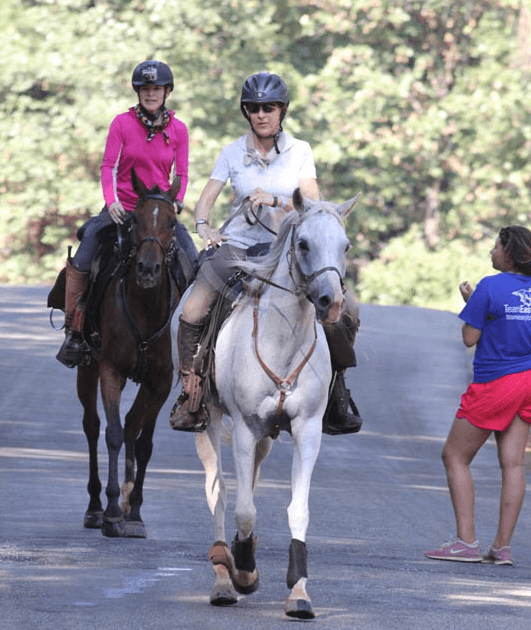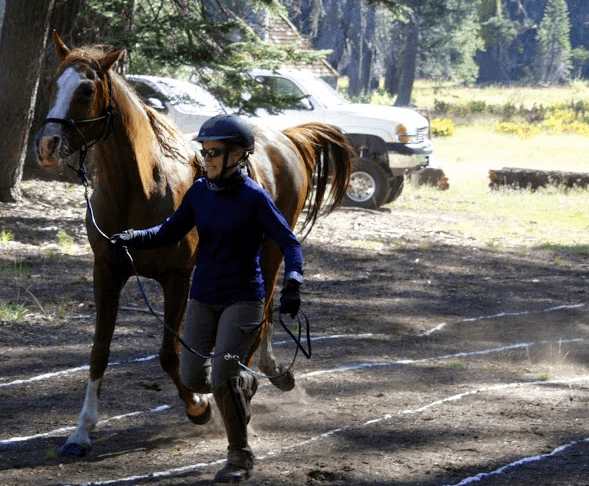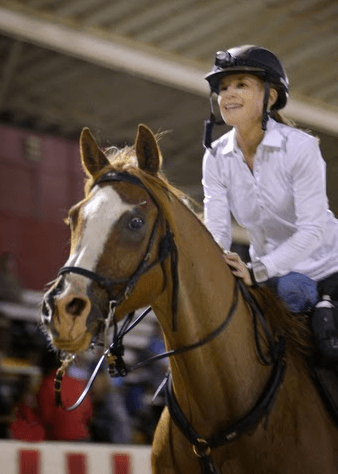I am fortunate enough to have a great group of friends to ride with, particularly Jenni Smith. We haven’t been out much together this year since Tevis, and I’ve missed our weekly rides. We have great conversations and I always learn something new. Riding together creates a great opportunity to exchange information.

Jenni and me arriving at the Foresthill vet check in 2013. We went on to get 2nd & 3rd place together at Tevis that year in Easyboot Glue-Ons
During a recent ride, Jenni and I launched into one of our conversations about horse care. I said to her that I thought by virtue of my horses being barefoot that I take better care of them overall. When my horses were shod, I would meet with my farrier once every five or six weeks and we would talk about how a horse has been moving since his last visit, we would look at wear marks on the steel shoes and sometimes he would watch them trot out if I commented on something out of the ordinary. Then he would replace the shoes and say “See you in six.” In between his visits, I would clean out the hooves but that was about it. Looking back on those days, I want to pop myself in the head. It was practically neglect.
Now I am fussing over their feet just about every day. I’m rasping them regularly, keeping an eagle eye on how they are wearing and taking close notes on any irregularities. And it’s not just their feet: my attention has moved up the legs to the whole body. I am paying more attention to how my horses are moving and feeling overall. And I attribute this to them being barefoot. Jenni nods in agreement. Shoes limit the amount of feedback you get from your horse, she said. You really can’t see significant wear patterns on the shoes, and you don’t get feedback from the hoof itself. It’s like the shoes interrupt the conversation with your horse. “Brilliant!” I exclaim.

Jenni trotting out Stoner at Robinson Flat, Tevis 2014.<
Another thing I’ve noticed is that my Easyboots fit a lot better than they used to. When I first started using them, I sometimes had a hard time keeping them on. I think it’s because my horse’s feet were shaped like the steel shoes they were wearing. Over time, they returned to their natural shape and so the boots fit better and now they stay on.
Also, how the horse moves determines how well the boots stay in place. Our new horse, DeLaCruz, wears 1.5 Easyboot Gloves on all four feet. He travels straight as an arrow and has never lost a boot. Tyler, on the other hand, travels with a slight rotation to his front feet. As a result, his boots can rotate about 10 to 15 degrees inward and then stop. When this happens, I will re-center them during a ride and they will go back to being offset rather quickly. Jenni suggested wrapping Mueller tape around the center of the hoof where it dishes in slightly. I’m going to try that.
Tyler also tries to sprint up steep hills, which results in him peeling out of his hind boots, what I like to call “burning rubber.” The proper way to avoid losing a boot going uphill is to start out slowly and gradually build up speed. I also quit fixing everyone else’s boots. Now the rule is, if you peel out up a hill and lose a boot, then you have to fix it yourself. My husband isn’t particularly fond of that rule, but it does get him to slow down.

Jenni and Stoner crossing the finish line at Tevis this year in fifth place.
As we trotted down the trail in unison, we agreed that having barefoot horses has definitely led to overall better care for them.




